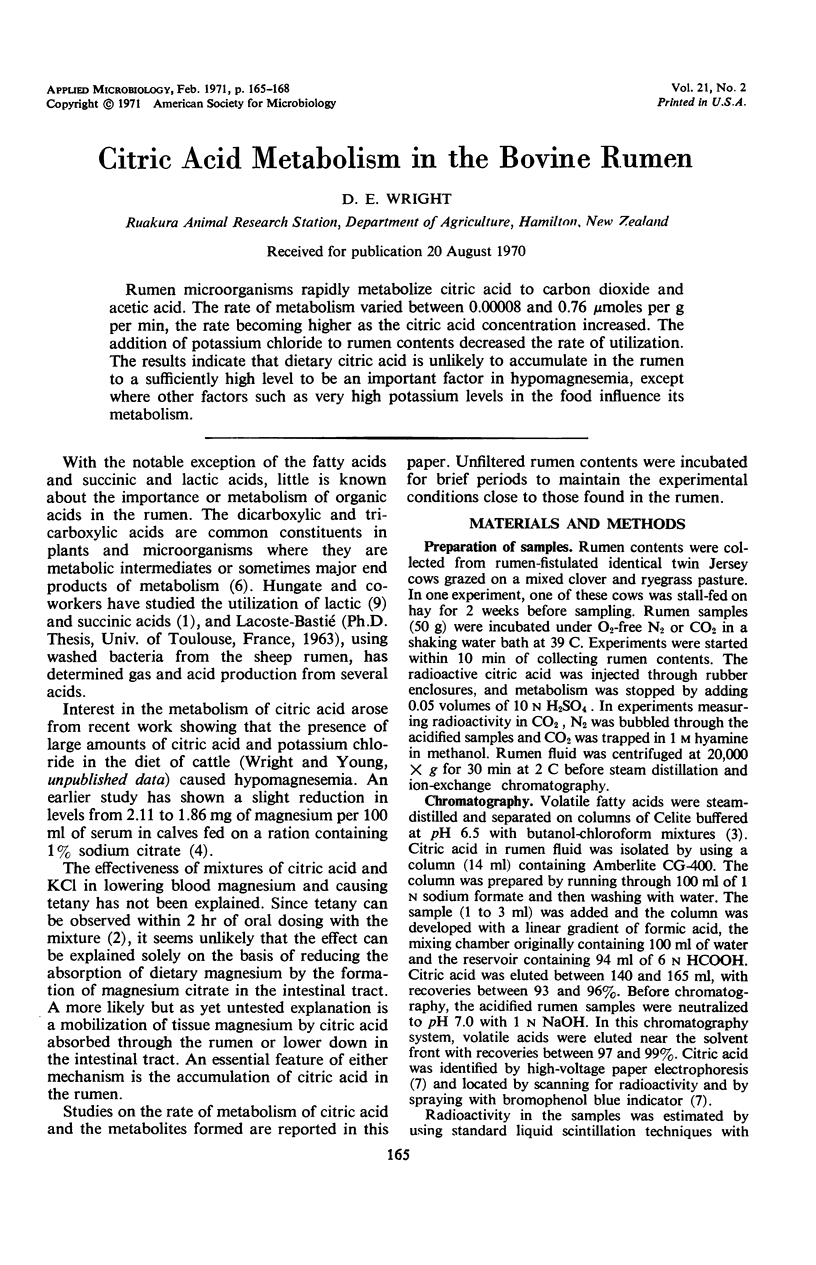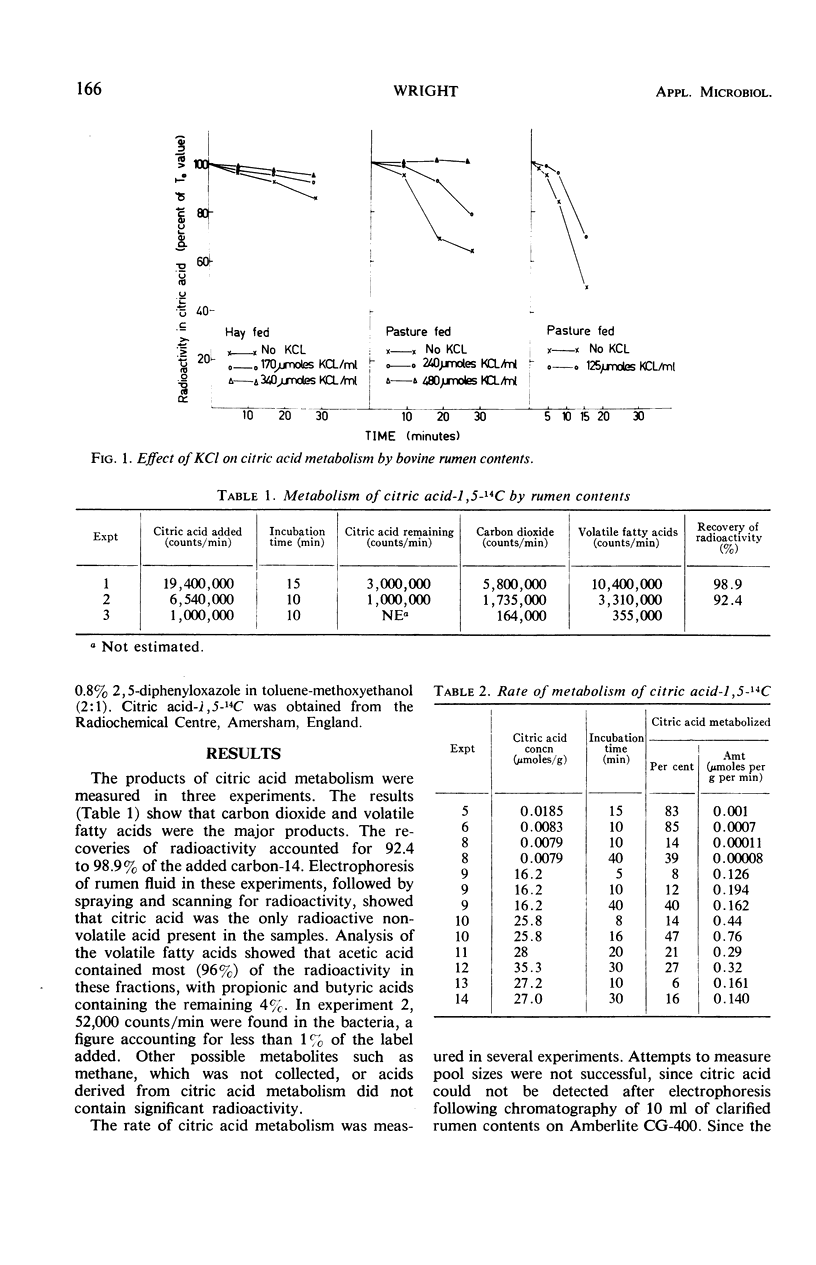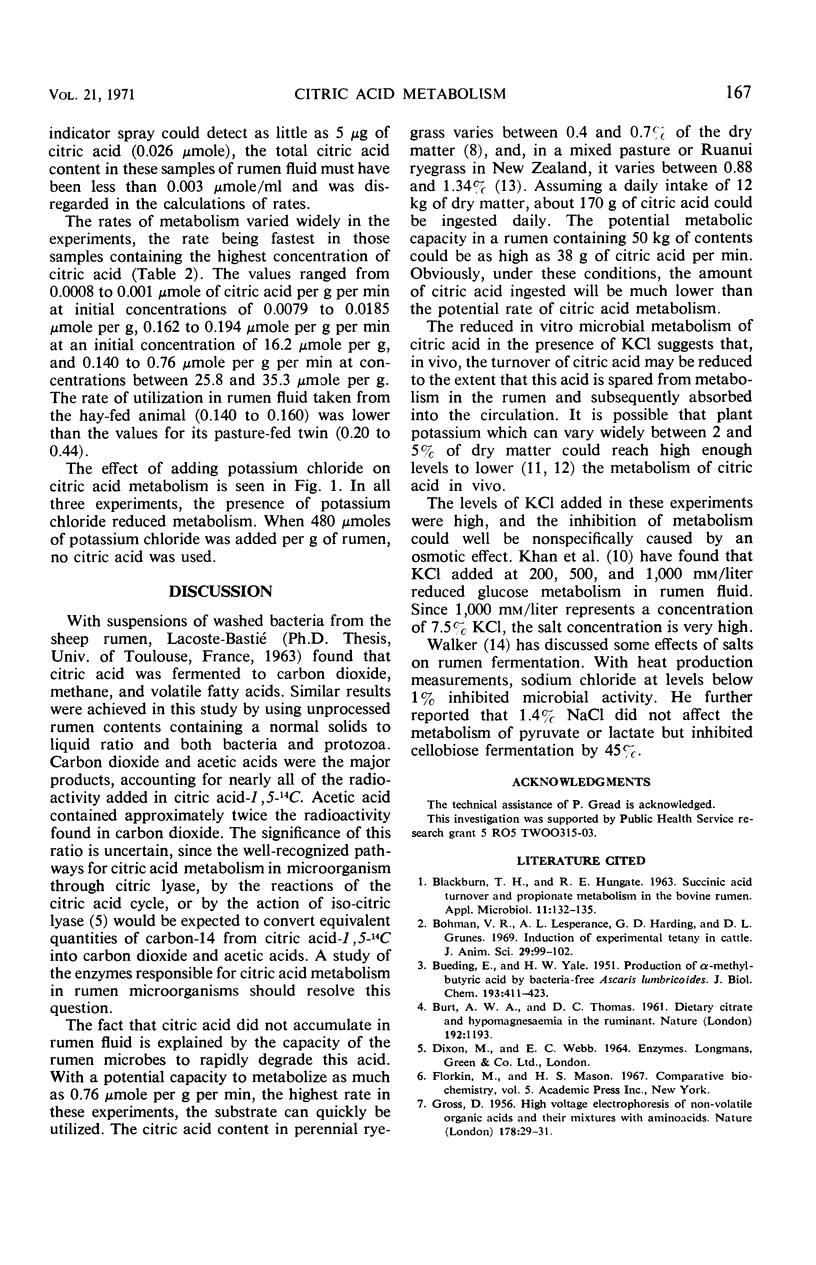Abstract
Rumen microorganisms rapidly metabolize citric acid to carbon dioxide and acetic acid. The rate of metabolism varied between 0.00008 and 0.76 μmoles per g per min, the rate becoming higher as the citric acid concentration increased. The addition of potassium chloride to rumen contents decreased the rate of utilization. The results indicate that dietary citric acid is unlikely to accumulate in the rumen to a sufficiently high level to be an important factor in hypomagnesemia, except where other factors such as very high potassium levels in the food influence its metabolism.
Full text
PDF



Selected References
These references are in PubMed. This may not be the complete list of references from this article.
- BLACKBURN T. H., HUNGATE R. E. Succinic acid turnover and propionate production in the bovine rumen. Appl Microbiol. 1963 Mar;11:132–135. doi: 10.1128/am.11.2.132-135.1963. [DOI] [PMC free article] [PubMed] [Google Scholar]
- BUEDING E., YALE H. W. Production of alpha-methylbutyric acid by bacteria-free Ascaris lumbricoides. J Biol Chem. 1951 Nov;193(1):411–423. [PubMed] [Google Scholar]
- BURT A. W., THOMAS D. C. Dietary citrate and hypomagnesaemia in the ruminant. Nature. 1961 Dec 23;192:1193–1193. doi: 10.1038/1921193a0. [DOI] [PubMed] [Google Scholar]
- Bohman V. R., Lesperance A. L., Harding G. D., Grunes D. L. Induction of experimental tetany in cattle. J Anim Sci. 1969 Jul;29(1):99–102. doi: 10.2527/jas1969.29199x. [DOI] [PubMed] [Google Scholar]
- JAYASURIYA G. C., HUNGATE R. E. Lactate conversions in the bovine rumen. Arch Biochem Biophys. 1959 Jun;82(2):274–287. doi: 10.1016/0003-9861(59)90123-7. [DOI] [PubMed] [Google Scholar]


